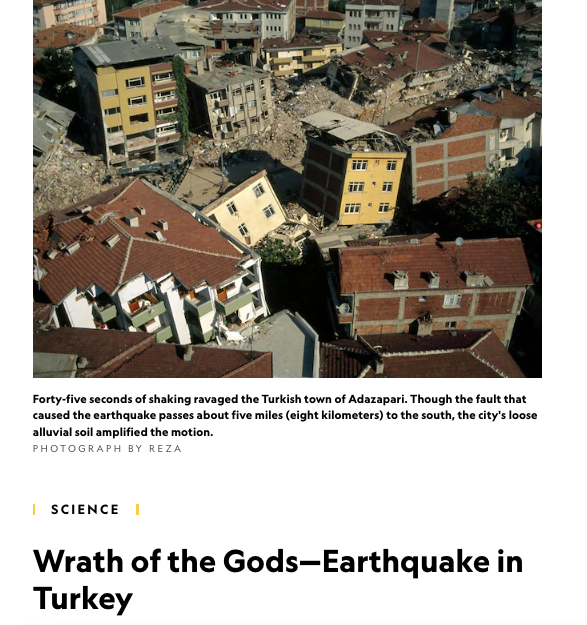
Wrath of God or Dark to LIGHT on where the controllers are Really spending money meant to help the people?
Did you know a seismologist accurately predicted this earthquake?
According to the Jerusalem Post,
Dutch researcher predicted that an earthquake would hit the region, highlighting with almost exact precision the epicenter of the quake that would soon strike.
Praise God some are being rescued from the earthquakes in Turkey and Syria. A new-born baby and his mother have been rescued from rubble in Turkey, around 90 hours after the first of Monday's deadly earthquakes.
The 10-day-old boy, named Yagiz, was retrieved from a ruined structure in the southern Hatay province.
Footage showed the child being carefully taken out overnight - a sight described by local media as miraculous.
Hopes of finding many more survivors are diminishing, amid freezing-cold weather four days after the disaster.
However, search and rescue efforts continue in both Turkey and neighbouring Syria - which was struck by the quakes as well. https://www.bbc.com/news/world-europe-64593486
This is not the case for all as the death toll continues to rise.
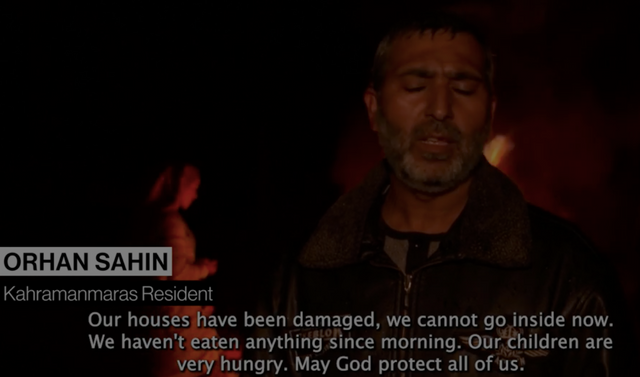
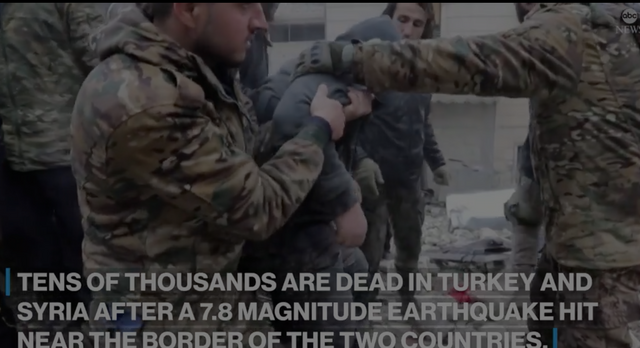
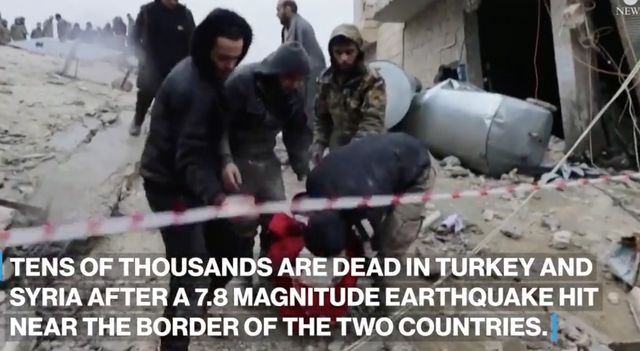
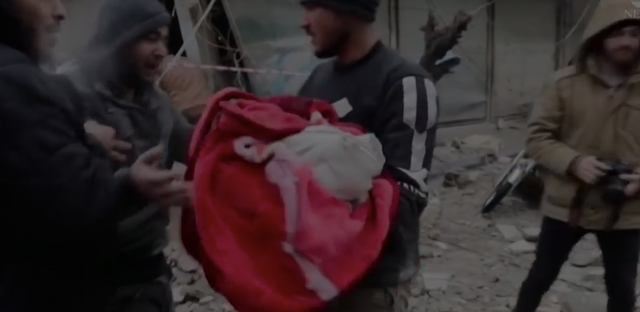
Footage obtained by the Reuters news agency also showed a man being retrieved from the ruins, though it was not known if he had any connection to the other two.
More than 21,000 people have died - most of them in Turkey - after Monday morning's initial 7.8-magnitude tremor and the hundreds of aftershocks that followed.
There have also been fears of a secondary catastrophe, as many people have been made homeless and are lacking shelter, water, fuel and electricity.
Turkish President Recap Tayyip Erdogan has described it as the "disaster of the century".
Opposition figures have accused Mr Erdogan of failing to prepare for the earthquake and have questioned how estimated 88bn lira ($4.6bn; £3.8bn) raised from an "earthquake tax" was spent. The levy - first imposed in the wake of a massive quake in 1999 that killed more than 17,000 people - was meant to have been spent on disaster prevention and the development of emergency services.
Kemal Kilicdaroglu, the leader of Turkey's main opposition party said on Wednesday that Mr Erdogan's government "has not prepared for an earthquake for 20 years".
Despite the devastation, stories of remarkable escapes or heroic rescues have been emerging over the past days.
For instance,
Thousands of people have offered to adopt a baby girl who was born under a collapsed building in north-west Syria.
When she was rescued, baby Aya - meaning miracle in Arabic - was still connected by her umbilical cord to her mother, who died along with other family members.

Her mother, father and all four of her siblings died after the quake hit the town of Jindayris.
Aya is now in hospital.
"She arrived on Monday in such a bad state, she had bumps, bruises, she was cold and barely breathing," said Hani Marouf, the paediatrician looking after her.
She is now in stable condition.
Videos of Aya's rescue went viral on social media. Footage showed a man sprinting from the collapsed debris of a building, holding a baby covered in dust.
Khalil al-Suwadi, a distant relative, who was there when she was pulled to safety, brought the newborn to Dr Marouf in the Syrian city of Afrin. A Kuwaiti TV anchor said, "I'm ready to take care of and adopt this child... if legal procedures allow me to."
The hospital manager, Khalid Attiah, says he has received dozens of calls from people all over the world wanting to adopt baby Aya.
Dr Attiah, who has a daughter just four months older than her, said, "I won't allow anyone to adopt her now. Until her distant family return, I'm treating her like one of my own."
For now, his wife is breastfeeding her alongside their own daughter.
In Aya's home town of Jindayris, people have been searching through collapsed buildings for loved ones.
A journalist there, Mohammed al-Adnan told the BBC, "The situation is a disaster. There are so many people under the rubble. There are still people we haven't got out yet."
He estimated that 90% of the town had been destroyed and most of the help so far had come from local people.
Where are administrations Really spending tax payers funds as there were earthquake taxes? Why aren't the buildings Claimed to be earthquake safe NOT? Where is all the money Really going? Who is cutting corners, lying to the people and WHY?

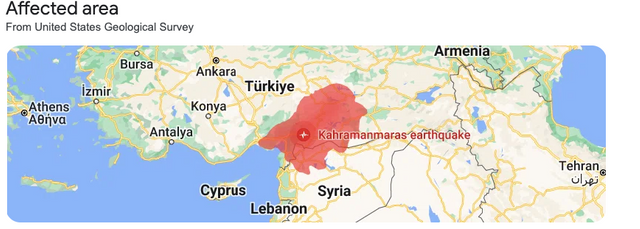
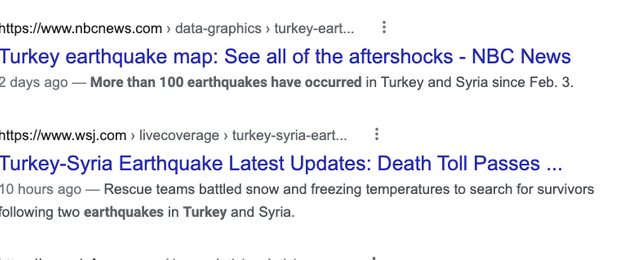
https://www.nbcnews.com/data-graphics/turkey-earthquake-map-see-aftershocks-rcna69713

According to Time The country’s disaster agency said that more than 5,600 buildings across southeastern Turkey have collapsed so far. “These are the kinds of quakes we’d expect to see 10 or 20 years apart,” says Cüneyt Tüzün, an earthquake engineer based in Izmir, Turkey. “They happened within a few hours of each other.”
But in a country where the arrival of a large earthquake was only a matter of time, how is such widespread destruction possible? As recently as last November,
civil engineers raised warnings that the country’s infrastructure was incapable of handling a large earthquake. Old buildings across the country don’t meet modern quake-resistant building codes, and experts told TIME that
although newer construction plans often call for higher building standards, they’re sometimes not carried out on the ground.
Do you find this interesting and sad?
https://time.com/6254024/turkey-syria-earthquake-building-2023/
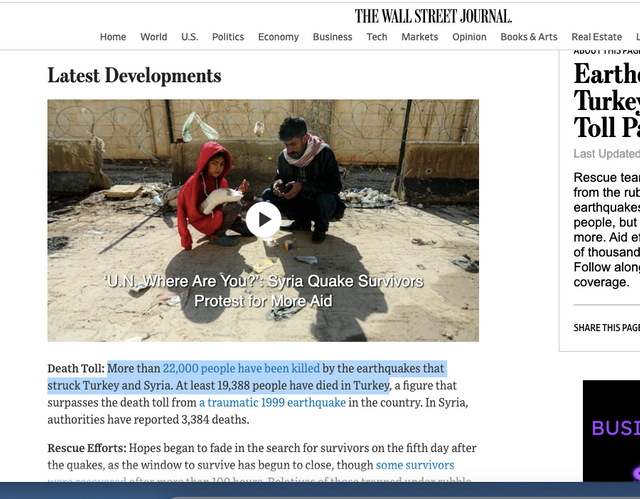
https://www.wsj.com/livecoverage/turkey-syria-earthquake
According to Time The country’s disaster agency said that more than 5,600 buildings across southeastern Turkey have collapsed so far. “These are the kinds of quakes we’d expect to see 10 or 20 years apart,” says Cüneyt Tüzün, an earthquake engineer based in Izmir, Turkey. “They happened within a few hours of each other.”
But in a country where the arrival of a large earthquake was only a matter of time, how is such widespread destruction possible? As recently as last November, civil engineers raised warnings that the country’s infrastructure was incapable of handling a large earthquake. Old buildings across the country don’t meet modern quake-resistant building codes, and experts told TIME that although newer construction plans often call for higher building standards, they’re sometimes not carried out on the ground. Do you find this interesting and sad? https://time.com/6254024/turkey-syria-earthquake-building-2023/

en years after a 1999 earthquake in İzmit killed over 17,000 people, the Turkish government established the Disaster and Emergency Management Authority (AFAD) to help cope in the face of natural disasters. The government also pledged new construction standards and a plan to strengthen existing buildings.
So WHAT happened?
Where did the funds go?
According to Time and other outlets The plan involved designating hundreds of urban spaces as evacuation points in case of emergency. But, over the years, an explosion of new developments undid many of the planned earthquake readiness improvements, and open-air evacuation zones were converted into high rises, NPR reported in 2017.
At the end of 2022, following a 5.9 magnitude earthquake, Turkey’s Union of Engineers and Architects released a statement saying that Turkey “has failed in terms of what needs to be done before the earthquake.”
The union added that site supervision “continues to be seen as a procedure on paper only,” noting that, “it is essential that the design, construction and inspection processes are carried out in a correct and vigorous way in order to ensure the safety of buildings against earthquakes. In each of these three pillars of safe construction, it is known that there are serious problems both legally and in practice.”
Dr. H. Kit Miyamoto, a structural engineer at Miyamoto International, is arriving in Turkey to help local engineers with earthquake engineering and provide humanitarian assistance. He says that in 1997, Turkey passed a code that required buildings to be constructed using ductile concrete, a material that is more flexible in the event of an earthquake, but estimates that only one in 10 buildings in the country meets the standard, as old buildings are often reused rather than razed down to meet new standards.
Even still, engineers can reinforce older buildings through retrofitting, a process that is more cost-effective than constructing a building from scratch. But Miyamoto, who has worked with the World Bank to retrofit schools in Turkey, says that it is difficult to force private buildings to do so.
“The construction industry is a big source of money,” explains Tüzün. This allows the government to turn a blind eye to looser regulation on sites, he says.
THIS and MODES of Transportation. Those involved in infrastructure make Big Bucks because it is HOW money and traffic of humans is Funneled!
Economic disparities between Eastern Turkey and Western Turkey are also at play here, points out Tuzun. Turkey has the highest regional disparities in GDP among 29 OECD countries, according to a 2020 OECD report, and the country’s eastern region—where the earthquake occurred—has long lagged in income in comparison to the western region, according to a CEPR study. This makes the region more vulnerable to insufficient infrastructure standards. “The construction quality is lower in comparison to the western part of Turkey,” Tuzun says.
Purdue. ..University where my daughter got her Computer Science degree and she is an Computer Engineer now! Ayhan Irfanoglu, a Civil Engineering professor at Purdue University, says that early photos of the earthquake damage show tall buildings “pancaked” or slumped on their sides “like a deck of cards.” Irfanoglu notes that often, local jurisdictions don’t enforce codes, or contractors on the ground don’t understand the complex codes they’re meant to be implementing.

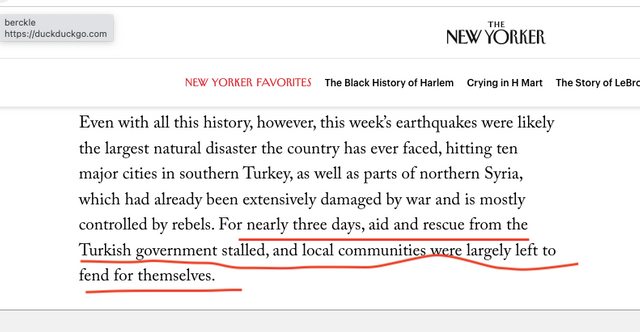
Arpaci’s father is a mukhtar, an elected community leader, and soon after the second quake, he and Arpaci returned to the center of Elbistan to see what they could do. Their own home had been destroyed.
While his father called every government connection he knew, asking for help from the afad, the government’s disaster-management agency, Arpaci helped other survivors dig through the ruins.
They listened for voices in the rubble; dug with their hands, small tools, sticks, broken furniture, anything they could; struggled to move heavy concrete blocks without heavy machinery, and to lift whole rooms’ worth of furniture, framed photos, toys. “I think I’ll hear one of these voices for the rest of my life,” Arpaci told me.
“He said over and over, ‘I am here, don’t leave me, I’m here, I’m here.’ But we had to leave him.” At night, Arpaci and his parents returned to the field to sleep in their cars. Others took piles of wood usually reserved for a local breadmaker’s oven and made bonfires for heat.

Eventually, after receiving limited responses, Arpaci’s father stopped calling his contacts in the central government. The two men instead started reaching out to friends in other cities, connections in the diaspora—the Arpacis are Kurdish Alevi, a minority within a minority—and the offices of opposition parties in Istanbul or in nearby cities.
Their friends posted on social media, including Twitter, until the government appeared to temporarily restrict access to the platform. (Many people assumed that this was because posts made the A.K.P. look bad, but government officials claim the disruption was a technical issue.)
The earthquake zone—an enormous swath of land comprising ten provinces that are wildly diverse ethnically, religiously, culturally, and politically—is home to many communities like the Kurdish Alevis, who, having long felt isolated from and ignored by the A.K.P., have created alternative communities of support.
Those first few days, Arpaci told me, “ninety-five per cent of the aid came directly from the people—the good people, the volunteers.”
Even after afad trucks began to arrive in Elbistan, the informal measures continued. “It’s our community, it’s our neighbors,” he said. “People trust each other, people help each other.”
THESE are like the alternative communities around even the United States! Communes and Barter System trading along with homesteaders who look out for one another and Do NOT trust a Failed government for help!
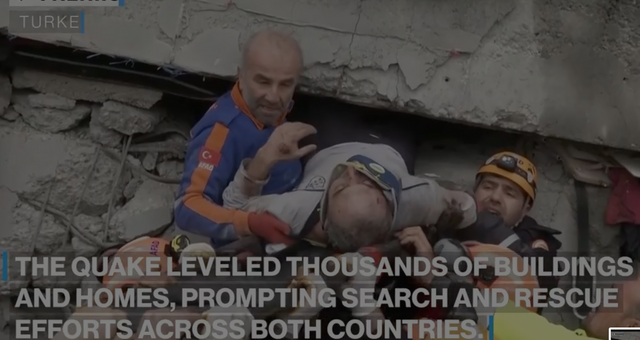
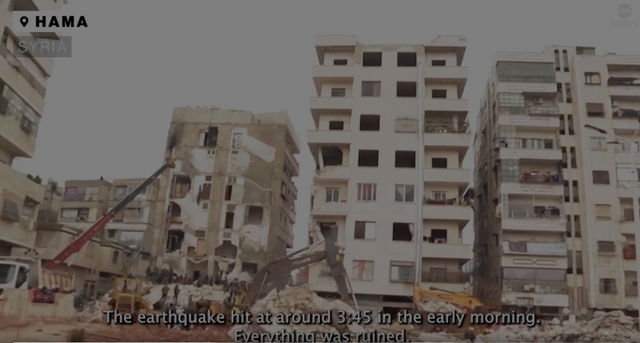

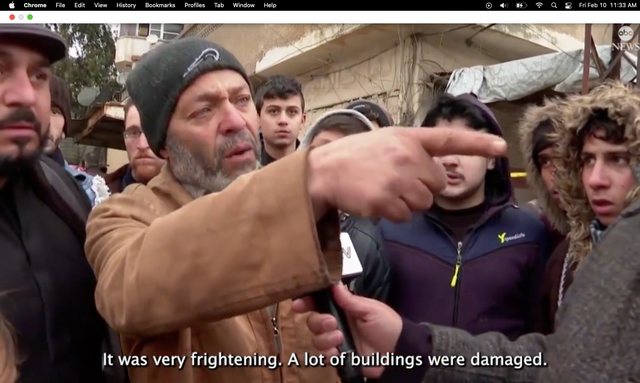
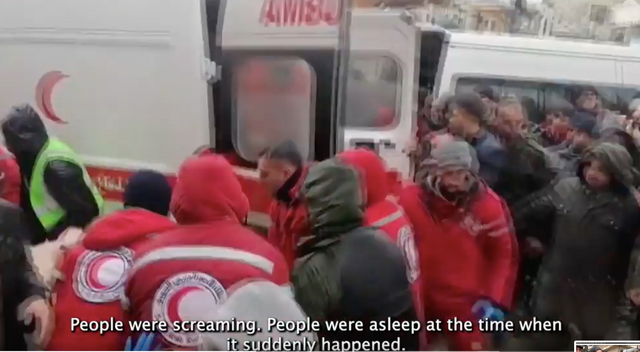
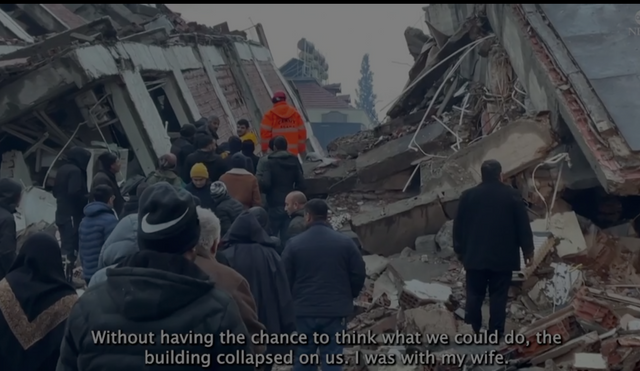
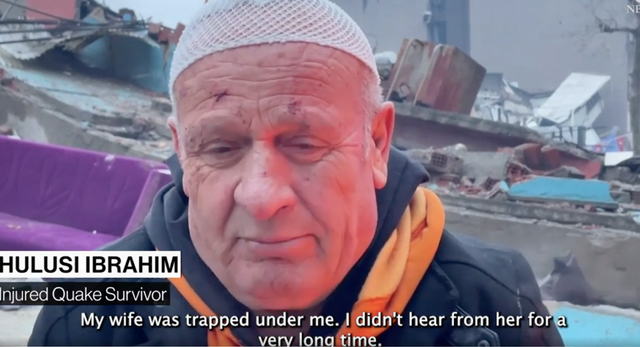
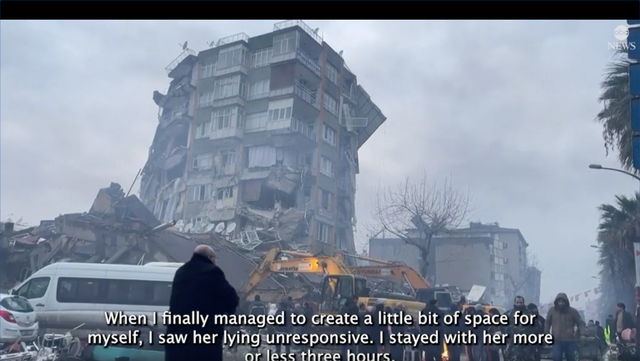
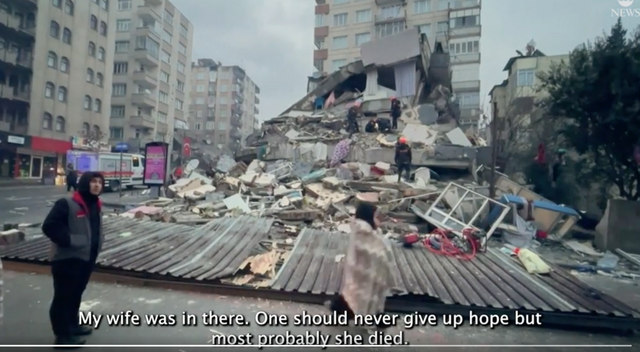
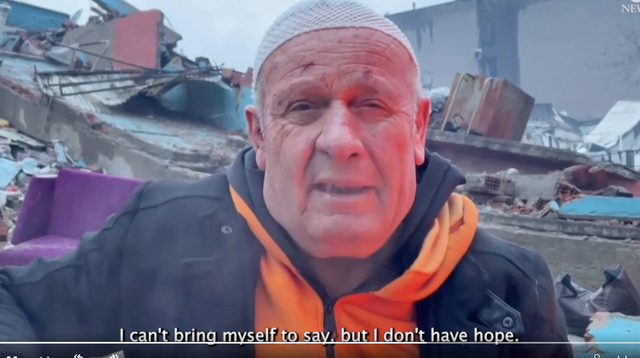
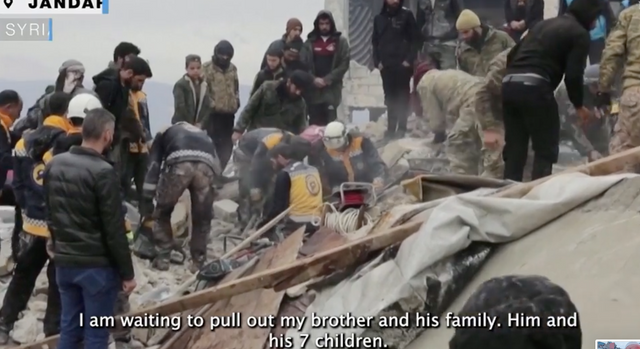
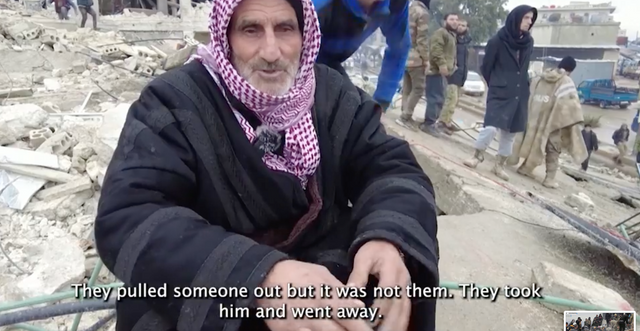
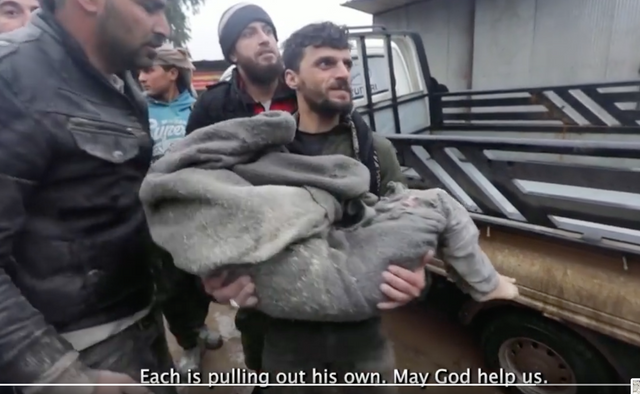
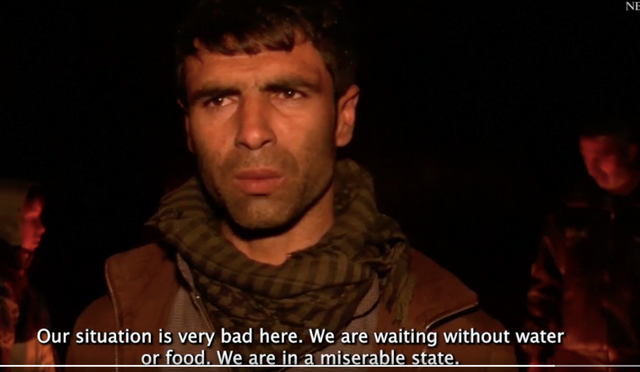
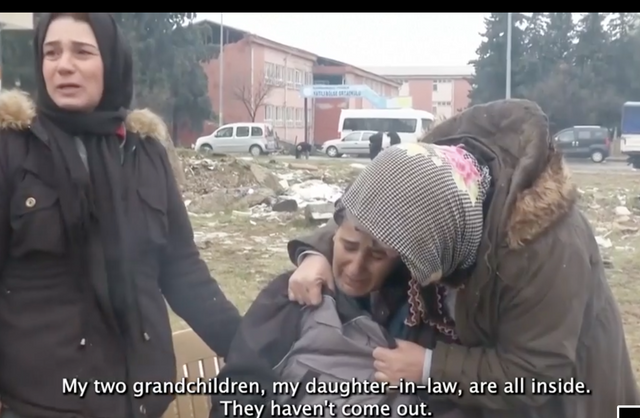
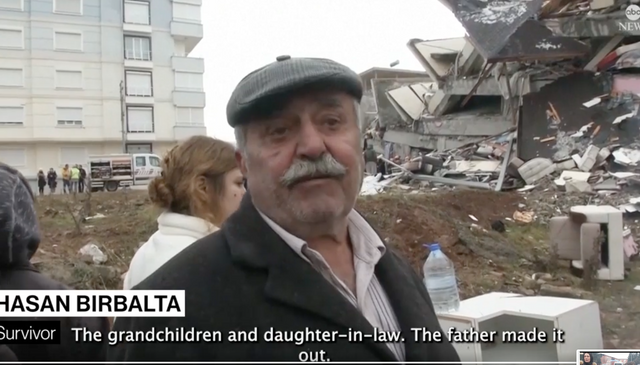
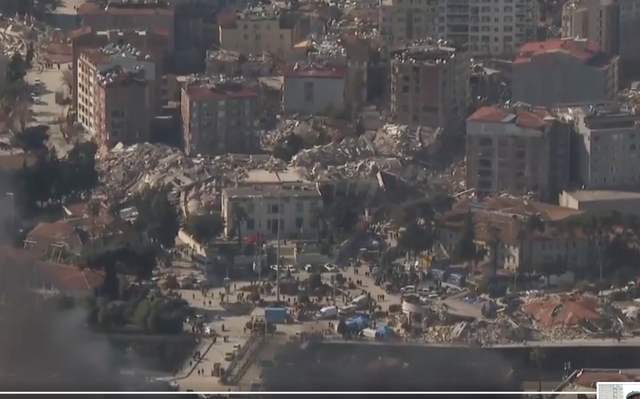

According to The Hindu,
Three earthquake measuring -- 7.8, 7.6, and 6.0 -- magnitude on the Richter scale has devastated Turkey and Syria, while the impacting regions as far away as Cyprus (456 km away), Lebanon (874 km), Israel (1,381 km) and Egypt (1,411 km). The tremors of the first quake were felt on February 6 around 4 a.m., with the epicentre located near the city of Gaziantep in south-central Turkey, which houses more than two million people. This population also includes scores of Syrian refugees who fled the raging civil war after 2011. At least 40 aftershocks followed the first quake, according to Turkish authorities, with some of magnitude as high as 6.7. Two more earthquakes -- of 7.6 and 6.0 magnitude -- struck the region nine hours later. This is the strongest earthquake to shake the region in more than 100 years and has killed at least 3,800 people across Turkey and Syria as of Tuesday morning, according to officials.
More than 2,000 people are feared injured, and several remain trapped under rubble. Turkey has announced a Level 4 alert calling for international aid; U.S., European Union, Russia, and Azerbaijan have reportedly dispatched aid. The extent of the destruction is still playing out: rescue workers are searching under the wreckage, with haunting visuals of children and adults being pulled out from under the debris being shared online. Rescue efforts are complicated by Turkey’s rainy and freezing weather, and Syria’s decade-long civil war that has displaced millions of people.
What is known about the damage?
The quake’s focus was 18 km deep, according to the U.S. Geological Survey. The epicentre was about 33 km from Gaziantep. The area has many buildings constructed of brittle concrete (which makes them prone to cracking, spalling, loss of strength, or steel corrosion), making them “extremely vulnerable to earthquake shaking”, according to the USGS.
Nearly 900 buildings were reportedly destroyed in Turkey’s Gaziantep and Kahramanmaras provinces, according to Vice President Fuat Otkay. All buildings located on the cross-border belt connecting the Syrian cities of Aleppo and Hama to Turkey’s Diyarbakir crumbled as well. This was “historically, the biggest earthquake recorded in the history of the centre”, the head of Syria’s National Earthquake Center, Raed Ahmed, told local media.
Image show heavy damage to roads, buildings, cars, shopping malls, and airports. Such was the intensity of the quake that the runway at Turkey’s Hatay Airport was torn open.
The historic 2,200-year-old stone castle sitting atop a hill in the centre of Gaziantep – its most famous landmark which was used as an observation point during Roman times – has been damaged, with its walls and watch towers disintegrated. One of the most prominent sites in Maltaya, the famous Yeni Mosque which dates back to the 13 th century, had collapsed.
Turkey’s proneness to earthquakes comes from its tectonic location. The Earth’s outermost layer comprises of some 15 major slabs, called tectonic plates. The boundaries between these plates are a system of faults – fractures between two blocks of rocks. Any sudden movement along these faults can cause earthquakes, according to the British Archaeological Survey.
Turkey is located on the Anatolian tectonic plate, which is wedged between the Eurasian and African plates.
On the north side, the minor Arabian plate further restricts movement. One fault line — the North Anatolian fault (NAF) line, the meeting point of the Eurasian and Anatolian tectonic plates — is known to be “particularly devastating”.
The NAF, one of the best-understood fault systems in the world, stretches from the south of Istanbul to northeastern Turkey and has caused catastrophic earthquakes in the past. In 1999 itself it caused two earthquakes — of 7.4 and 7.0 magnitude each — in Gölcük and Düzce provinces. Almost 18,000 people died and more than 45,000 were injured. In 2011 again, more than 500 people died when a 7.1 magnitude earthquake shook the eastern city of Van.
Then there is the East Anatolian fault line, the tectonic boundary between the Anatolian Plate and the northward-moving Arabian Plate. It runs 650 kilometers from eastern Turkey and into the Mediterranean. In addition to this, the Aegean Sea Plate, located in the eastern Mediterranean Sea under southern Greece and western Turkey, is also a source of seismic activity in the region.
According to one estimate, almost 95% of the country’s land mass is prone to earthquakes, while about a third of the country is at high risk, including the areas around the major cities of Istanbul and Izmir and the region of East Anatolia.
What makes this one catastrophic in particular?
Between 2013 and 2022 there were 30,673 reported earthquakes across the world. Only two of them reached the same magnitude as of Monday’s quake.
“It’s a very large fault zone, but this is a larger earthquake than they’ve experienced any time in recent memory,” Karl Lang, an assistant professor at Georgia Tech University’s School of Earth and Atmospheric Sciences, told CNN, referring to Monday’s earthquake.
Monday’s tremors are believed to be the strongest since the December of 1939, when a magnitude-8.0 earthquake struck near the eastern city of Erzincan. The quake killed more than 20,000 people and damaged almost 1,16,720 buildings.
Between 1939 and 1999, Turkey has witnessed five major earthquakes. In August 1999, the Izmit Earthquake struck the Antolian fault system, registering a magnitude of 7.4, and shook some of the most densely-populated urban areas for almost a minute. 17,000 people died, 1,20,000 houses crumbled down due to poor construction, and 2,50,000 were rendered homeless. Three months later, a 7.2 earthquake again on the NAF lead to more than 845 deaths in the province of Duzce and surrounding areas.
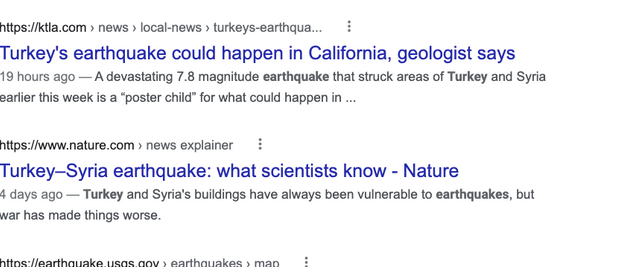
https://www.nature.com/articles/d41586-023-00364-y
Karl Mueller, a professor of geological sciences at the University of Colorado at Boulder, explained in an interview with the Associated Press that tectonic plates can crunch together or slide sideways.
“That’s what we’re seeing in Turkey. We’re seeing one plate moving northward and bumping into Turkey, and Turkey is sliding sideways out of the way of that bigger plate,” Mueller said.
He added that Californians can “expect” the same thing to happen along the San Andreas Fault, which runs about 745 miles through California.
“This earthquake is a poster child for what’s going to happen in Southern California … Granted, there are differences between infrastructure and urbanization in Turkey versus Southern California, but in terms of the energy that’s released in the earthquake, this what we think is going to happen,” Mueller said.
Has this been talked about for years now? You know it has!
As for how to prepare for an earthquake of that scale, the geologist said stocking up on supplies like water and food is a must.
“It’s a good idea to have a couple of weeks’ worth of water supply. A bunch of gallon jugs or even a 55-gallon drum of water stored somewhere in your house, nonperishable food, have a couple of weeks of food … know where your gas shut off valve is. That’s a real concern,” he said.
Better prepared than sorry?
Not going overboard, but some common sense preparations.
https://ktla.com/news/local-news/turkeys-earthquake-could-happen-in-california-geologist-says/

A family from Corona, Queens is among the victims killed in a 7.8 magnitude earthquake that rocked Turkey and Syria, CAIR-NY confirmed.
QUEENS, New York (WABC) -- Members of a mosque prayed for a family from Queens who was among the thousands of people that were killed in a devastating 7.8 magnitude earthquake that rocked southeastern Turkey and northwestern Syria early Monday.
The Council on American-Islamic Relations (CAIR-NY) confirmed the death of former board member, 35-year-old Burak Firik, his 32-year-old wife Kimberly Firik, his 1-year-old and 2-year-old sons, and his mother.
https://abc7ny.com/turkey-earthquake-queens-family-victims/12792335/
The Firiks, from Corona, Queens, were in Turkey for over a month visiting family.

#TurkeyEarthquake, #SyriaEarthquake, #TurkeySyriaEarthquakes, #Earthquakes
More Sources,
https://www.bbc.com/news/world-middle-east-64588133
https://www.nationalgeographic.com/science/article/anatolian-fault